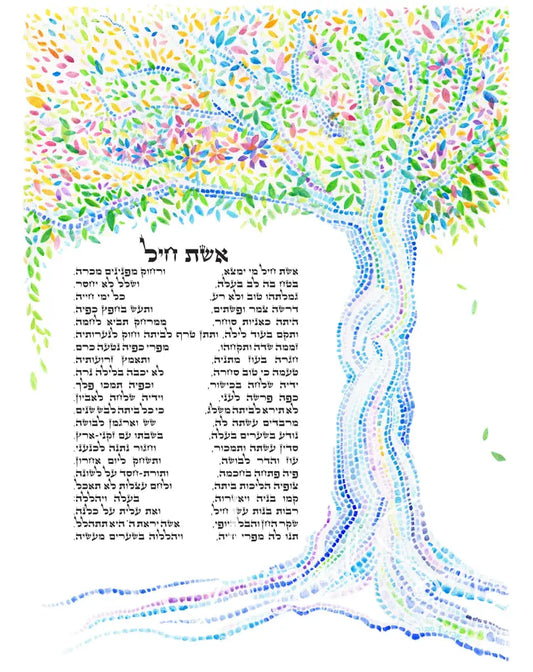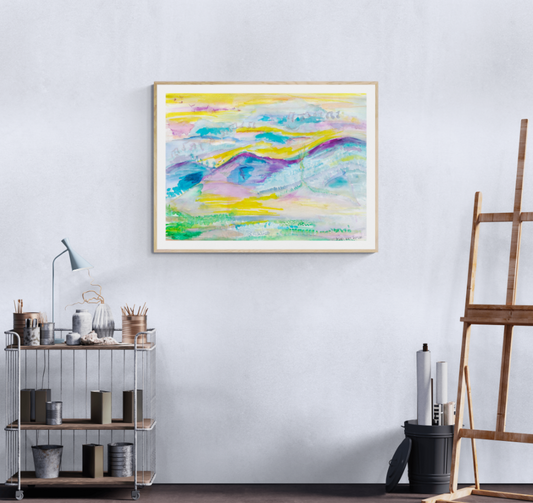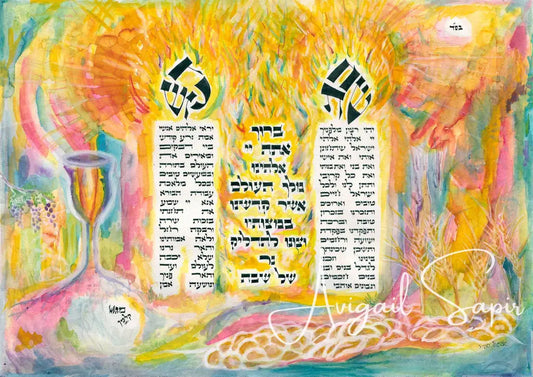Make Your Moment Last Forever
-
Eishet Chayil - Woman of Valor Art
Regular price From $65.00 USDRegular priceUnit price per -
Meron Mountains
Regular price From $105.00 USDRegular priceUnit price per$60.00 USDSale price From $105.00 USD -
Original Painting, Shabbat Candles Jewish Wall Art, Candle Lighting Blessing Housewarming Gift 50 x 70 cm.
Regular price $4,264.00 USDRegular priceUnit price per -
Shabbat Kodesh | Candle Lighting Blessing | Shabbat Candle Blessing
Regular price From $65.00 USDRegular priceUnit price per$60.00 USDSale price From $65.00 USD
Everything You Need To Know About Shabbat Art
Shabbat art is a term that encompasses various forms of artistic expression that relate to the Jewish day of rest. Shabbat art can include paintings, sculptures, textiles, calligraphy, crafts, and more. Shabbat art can serve different purposes, such as enhancing the beauty and spirituality of the day, expressing personal or communal feelings and values, or celebrating the rich and diverse traditions and customs of Judaism.
One of the aspects of shabbat art that is particularly meaningful and beautiful is the use of Hebrew calligraphy and typography to write or display shabbat blessings and prayers. Hebrew is the sacred language of Judaism, and its letters and words have deep symbolic and mystical significance. By using calligraphy and typography, artists can create stunning visual representations of the sacred texts that are recited or sung on shabbat, such as the candle lighting blessing, the kiddush, the zemirot, the birkat hamazon, and the havdalah. These artworks can enhance the aesthetic and spiritual experience of shabbat by adding color, shape, texture, and design to the words.
One example of a shabbat blessing in Hebrew calligraphy is the candle lighting blessing by Avigail Sapir. This painting was a collaboration piece with Kalman Gavriel Delmoor, also known as “The Jerusalem Scribe”. The original piece was painted with watercolor and vibrant water-based Peruvian pigments. The original and the print are both available for sale.
Another aspect of shabbat art that is fascinating and influential is the impact of shabbat on modern Jewish artists, such as Marc Chagall, Ben Shahn, Mark Rothko, and others. These artists were inspired by their Jewish heritage and culture, and incorporated elements of shabbat into their artworks. For example, Marc Chagall, one of the most famous Jewish painters of the 20th century, often depicted scenes of shabbat in his paintings, such as “The Fiddler” (1912), “The Praying Jew” (1923), “The White Crucifixion” (1938), and “The Sabbath” (1951). His paintings expressed his nostalgia for his childhood in Vitebsk, Belarus, where he witnessed the joy and warmth of shabbat in his family and community.
Ben Shahn, another prominent Jewish painter of the 20th century, also portrayed shabbat in his paintings, such as “Sabbath Eve” (1935), “The Rabbi” (1940), “Sabbath” (1945), and “Shabbos” (1955). His paintings reflected his social activism and his sympathy for the oppressed and marginalized people. He used shabbat as a symbol of hope and dignity for the Jewish people in times of hardship and persecution.
Mark Rothko, one of the pioneers of abstract expressionism, was less explicit about his Jewish identity and influence in his paintings, but he was nevertheless influenced by his Jewish upbringing and education. He was exposed to Jewish texts and philosophy as a child in Dvinsk, Latvia, where he attended a cheder (Jewish elementary school). He later studied at Yale University, where he was involved in a Jewish fraternity and a Jewish cultural magazine. He also visited Israel in 1954, where he was impressed by the ancient ruins and landscapes. His paintings, especially his later works that feature large blocks of color on canvas, can be seen as expressions of his spiritual quest for transcendence and meaning. Some scholars have suggested that his paintings evoke the mystical experience of shabbat, when one can encounter the divine presence in silence and contemplation.
Shabbat art is a rich and diverse field that offers many insights into the Jewish culture and spirituality. By exploring shabbat art, one can appreciate the beauty and significance of shabbat as a day of rest, joy, celebration, and connection.






